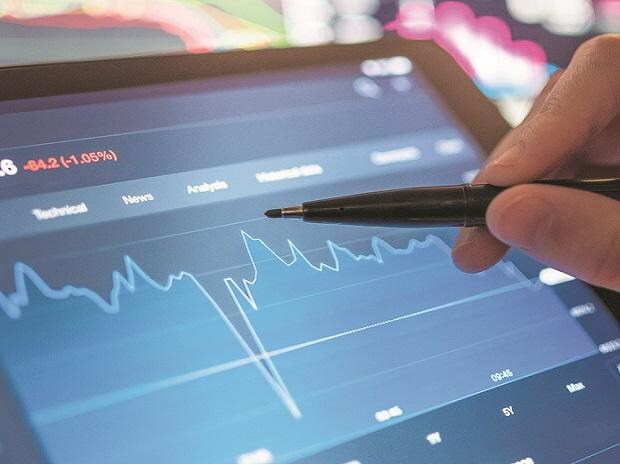Germany's Soaring Producer Prices: A Deep Dive into November's Inflation Spike & What It Means for You
Meta Description: Germany's November PPI surge: Analyzing the 0.5% jump, its impact on consumers, the role of energy prices, and future economic forecasts. Explore expert insights and predictions for German inflation. #GermanPPI #Inflation #GermanEconomy #ProducerPrices #EconomicAnalysis
Imagine this: you're sipping your morning coffee, scanning the headlines, and BAM! A jarring statistic jolts you awake: Germany's Producer Price Index (PPI) leaped by 0.5% in November—its biggest monthly increase since April 2023! What does this really mean? Is this just another blip on the radar, or a harbinger of tougher times ahead for German consumers and the wider European economy? This isn't just dry economic data; it's a story about real people, their livelihoods, and the complex forces shaping their financial futures. This isn't about abstract numbers; it's about the price of your groceries, the cost of energy in your home, and the potential ripple effects on everything from your next vacation to the stability of your job. We'll delve deep into the intricacies of this significant rise, examining the underlying causes, exploring potential consequences, and offering insightful predictions based on years of experience analyzing volatile market trends. Forget the jargon-filled reports; we're here to provide a clear, concise, and human-centric understanding of this pivotal economic event. Get ready to unravel the mystery behind Germany's surprising inflation spike and discover what it means for you, your family, and the future of the German economy. Prepare to be informed, empowered, and ready to navigate the complexities of the ever-changing economic landscape. This isn't just another news story; it's your financial future we're talking about.
German Producer Price Index (PPI)
The November 2023 figure represents a significant development, marking a substantial increase compared to previous months. This jump isn't just a statistical anomaly; it’s a clear indication of rising inflationary pressures within the German economy. Remember, the PPI measures the average change in prices received by domestic producers for their output. A significant increase, as we saw in November, suggests that companies are facing increased costs for their production, and these costs are likely to be passed on to consumers eventually. This isn't a situation unique to Germany; many nations are grappling with similar pressures, but the scale of the increase warrants closer examination. This isn't just about numbers; it's about the everyday realities faced by German businesses and consumers.
Factors Contributing to the PPI Surge
Several intertwined factors contributed to this notable increase in Germany's PPI:
-
Energy Prices: The lingering effects of the energy crisis continue to exert considerable pressure. While prices have stabilized somewhat, they remain significantly higher than pre-crisis levels. Fluctuations in global energy markets continue to impact production costs across various sectors. This is arguably the single biggest driver of the PPI jump. Think of it as the keystone in a complex arch – destabilize this, and the entire structure feels the strain.
-
Supply Chain Disruptions: Though easing, the global supply chain continues to experience bottlenecks in certain areas. This leads to increased transportation costs and material shortages, adding to production expenses. This is a lingering issue that continues to haunt businesses worldwide.
-
Increased Raw Material Costs: The prices of essential raw materials, from metals to agricultural products, have fluctuated widely. This volatility impacts manufacturers across the board, leading to increased production costs. The ripple effect is significant, impacting everything from car manufacturing to food processing.
-
Inflationary Expectations: The psychology of inflation plays a crucial role. If businesses anticipate continued price increases, they may increase prices proactively, creating a self-fulfilling prophecy. This is a critical aspect often overlooked; it's not just about the present, but also about the anticipated future.
-
Strong Euro: While seemingly positive, a strong Euro can impact import costs, impacting businesses reliant on imported goods and materials. It's a complex relationship; a strong currency isn't always beneficial for all businesses.
Let's visualize this with a simple table:
| Factor | Impact on PPI | Severity |
|-------------------------|-------------------------------------------|----------|
| Energy Prices | Significant upward pressure | High |
| Supply Chain Disruptions | Moderate upward pressure | Medium |
| Raw Material Costs | Moderate to significant upward pressure | Medium |
| Inflationary Expectations | Moderate upward pressure, self-fulfilling | Medium |
| Strong Euro | Mixed impact, potentially upward pressure | Low to Medium |
The Impact on Consumers
The increase in producer prices inevitably translates into higher prices for consumers. While not immediate, the impact will be felt in the coming months as businesses adjust their pricing strategies to account for increased production costs. This means potentially higher prices for everyday goods and services, directly impacting household budgets. This can lead to reduced consumer spending, potentially slowing down economic growth. It's a domino effect: higher production costs lead to higher consumer prices, leading to reduced consumer spending, potentially triggering a wider economic slowdown.
Predictions and Future Outlook
Predicting the future is never easy, but based on current trends and expert analysis, several scenarios are plausible:
-
Continued Inflation: The PPI surge suggests that inflationary pressures are far from over. Further increases in consumer prices are likely in the coming months.
-
Central Bank Response: The European Central Bank (ECB) is likely to respond to rising inflation by further tightening monetary policy. This could involve increasing interest rates, potentially slowing down economic growth to curb inflation.
-
Government Intervention: The German government might implement measures to mitigate the impact of rising prices on consumers. However, the effectiveness of such measures remains to be seen.
-
Economic Slowdown: A significant economic slowdown is a real possibility, given the combination of rising inflation and potential central bank intervention.
These predictions are not set in stone; the actual outcome will depend on a multitude of interacting factors, many of which are difficult to forecast with precision.
Frequently Asked Questions (FAQs)
-
Q: What is the PPI and why is it important? A: The Producer Price Index (PPI) measures the average change over time in the selling prices received by domestic producers for their output. It's a leading indicator of future consumer price inflation.
-
Q: How does the PPI affect me personally? A: Higher PPI translates to higher prices for goods and services you buy, impacting your household budget.
-
Q: What can the government do to address this? A: Governments can implement measures to mitigate the effects, such as subsidies or targeted tax relief, but the long-term effectiveness depends on various factors.
-
Q: Is this solely a German issue? A: No, many countries face similar inflationary pressures globally, although the severity varies.
-
Q: Will interest rates go up? A: It's highly likely that central banks will continue to raise interest rates to combat inflation, but the extent depends on the economic situation.
-
Q: What can I do to protect myself? A: Budget carefully, diversify your investments, and stay informed about economic developments.
Conclusion
The 0.5% jump in Germany's November PPI is a serious development, signaling continued inflationary pressures. While the future is uncertain, understanding the contributing factors and potential consequences is crucial for businesses and consumers alike. Staying informed, adapting strategies, and advocating for responsible economic policies are key to navigating these challenging times. The road ahead may be bumpy, but with informed awareness, we can better prepare for what lies ahead. Remember, it's not just about statistics; it’s about the real-world impact on all of us.



